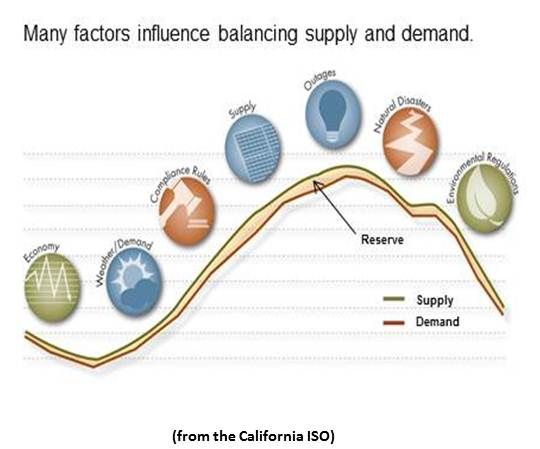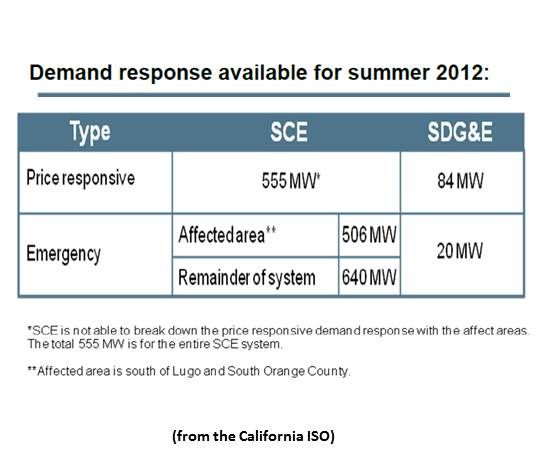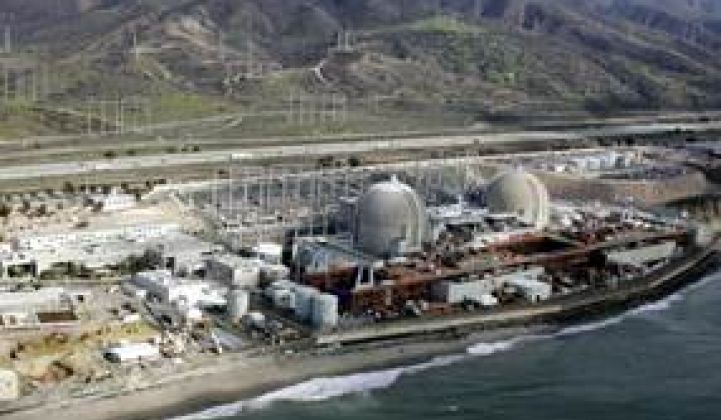If, as currently predicted, Southern California Edison is unable to get its 2,200-megawatt San Onofre Nuclear Generating Station (SONGS) back in service in time for the heat of the summer, California’s power generation and delivery system will be profoundly tested.
“An extended outage of both SONGS units may create local reliability issues during heat waves for San Diego and parts of south Orange County,” the California Independent System Operator Corporation (CAISO) said. “Parts of the grid serving the Los Angeles Basin may also be stressed during high demand periods.”
To meet Southern California’s demand for electricity without hamstringing its economy, the ISO is making plans that will put into action idled power plants, new transmission, the state’s best practices, renewables and cutting edge grid tools.
“Southern California Edison’s four replacement steam generators at their San Onofre Nuclear Generating Station failed in less than two years of operation, while the original equipment operated for 28 years,” noted a just-released Fairewinds/Friends of the Earth report.
SCE has, according to the Fairewinds report, acknowledged replacing the steam generators as “a strategic decision to avoid a more thorough license amendment and review process” by the Nuclear Regulatory Commission (NRC).
The right solution to the vibration problem that led to the shutdown, according to Fairewinds, requires “major modifications with repair and outage time that could last more than eighteen months if Edison and Mitsubishi are even able to repair these faulty designed steam generators,” adding, “the safest long-term action is the replacement of the San Onofre steam generators.”
While SCE continues to work with the NRC to bring SONGS back, the ISO is working to minimize impacts.

“We are not the safety experts. That’s the NRC,” said ISO Director of Communications and Public Relations Stephanie McCorkle. “Our job is to plan.”
The ISO is, McCorkle noted, doing “contingency planning in coordination with the Governor’s office, state energy agencies, federal officials and the utilities [because the loss of SONGS] reduces local electricity supply and the ability of the high voltage grid to import power into the region that already has limited transmission lines.”
McCorkle was blunt. Without contingency planning and mitigation of that 2,200-megawatt loss, she said, “We would be in the hole.”
The focus of the ISO’s planning has been two gas-fired power plant units previously closed as a result of the state’s efforts to clean up its power supply and two under-construction transmission lines.
The ISO considered it “absolutely critical to get units three and four at the Huntington Beach Power Plant available for dispatch, and that was done as of Friday,” McCorkle said.
“The Huntington Beach units not only add 452 megawatts of capacity in the LA Basin,” the ISO reported, “but also enable 350 megawatts of additional imported power to transfer into San Diego.”
Bringing these units back will cost SCE and San Diego Gas and Electric (SDG&E) $2.5 million per month. Air quality regulators have permitted their service through November 1.
Completing the Sunrise Powerlink and Barre-Ellis transmission lines on schedule in June, before the summer’s peak demand hits, McCorkle said, will “strengthen the transmission system in general and allow us to import more power from the Southwest.”
Without these mitigations, McCorkle said, the LA Basin would be short 240 megawatts on a high-demand, hot day and the San Diego area would be short 337 megawatts. With them, she said, we only have reserve margins of thirteen megawatts in San Diego and of 212 megawatts in the LA Basin.
The ISO has also secured $9 million in funding from the California Public Utilities Commission (CPUC), McCorkle said, to reactivate its Flex Alert conservation campaign. Radio and TV ads will begin appearing in late June that will teach consumers conservation measures for Southern California’s 4 p.m. to 6 p.m. “air conditioner rush hour,” when load is most likely to exceed ISO capacity.

Finally, McCorkle said, the ISO and the utilities are “encouraging more participation in local voluntary demand response (DR) programs.” As a result, recent SCE and SDG&E smart meter programs may pay off sooner and bigger than expected in heading off rolling power outages.
“Because SDG&E has 100 percent smart meter penetration,” McCorkle said, “it can track how much customers are cutting back.” Customers who conserve will, for the first time in California, be compensated without having to enroll in a program. It is “a way for people to respond and be compensated,” she explained. And conserved energy, she added, “is counted like any other resource. This is where people power is going to pay off.”
The ISO is also, McCorkle said, “analyzing the potential long-term implications of being without the San Onofre units.” Its conclusion, she said, is “there aren’t adequate resources to replace San Onofre permanently. We’re just trying to fill the holes as best we can."
This video was part of the ISO's last Flex Your Power campaign.



